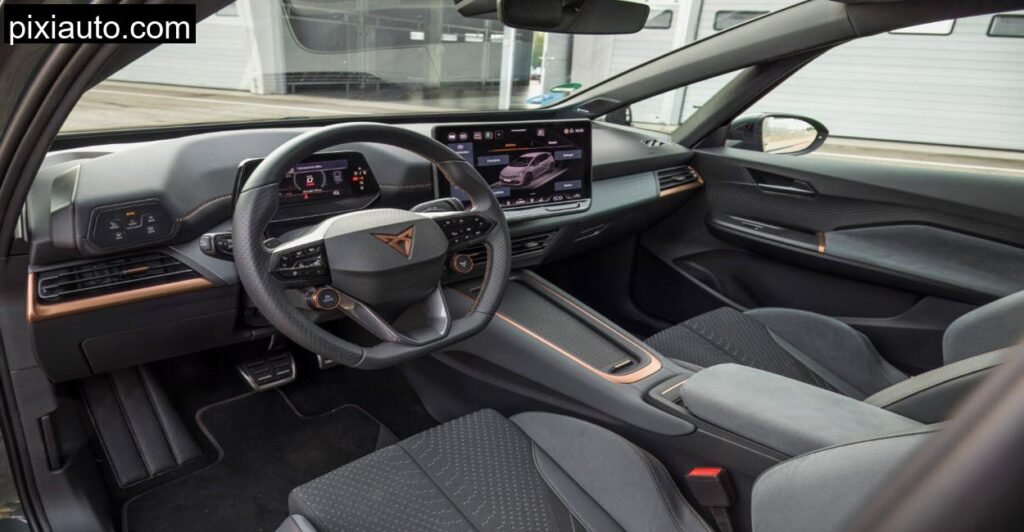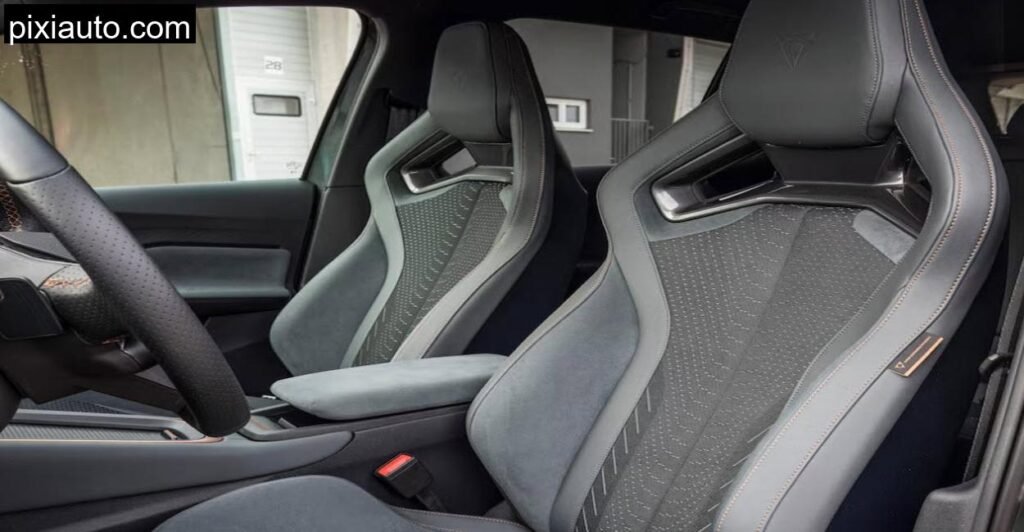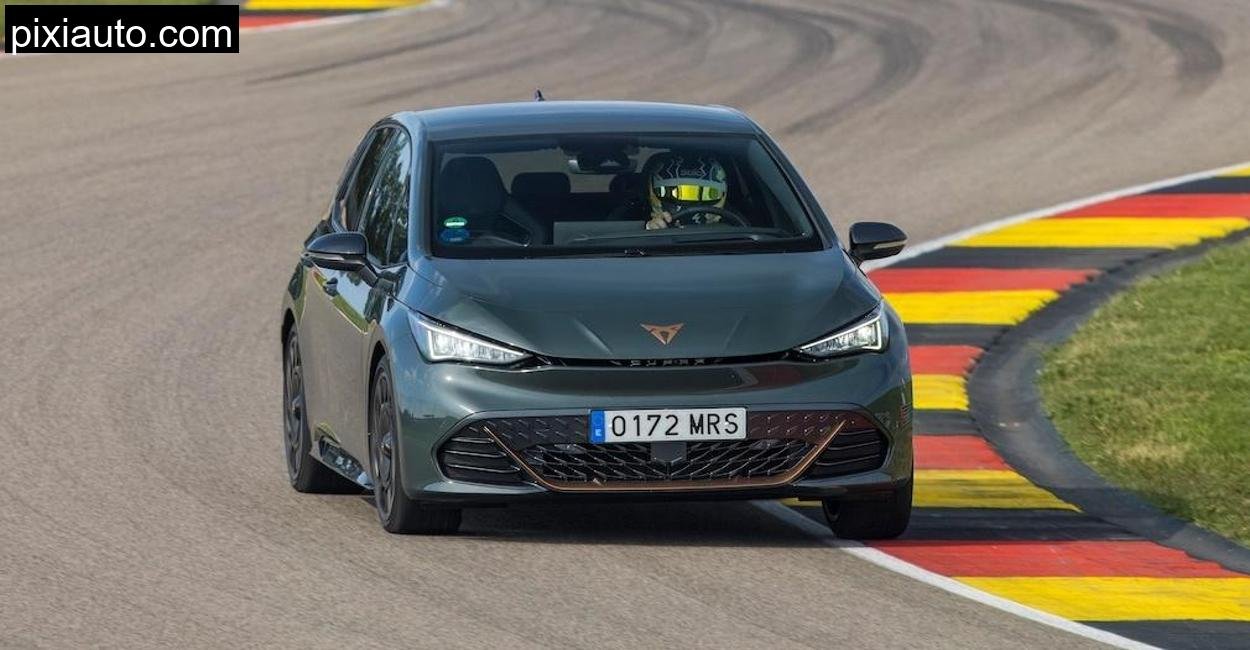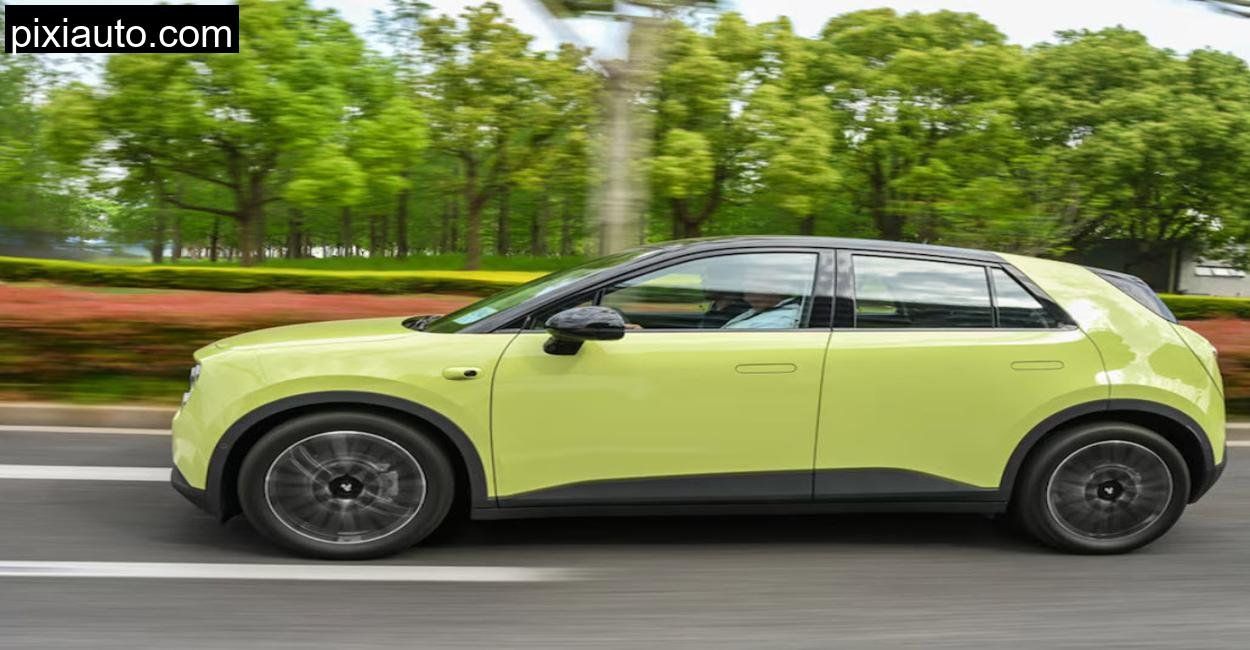There’s something quietly symbolic about driving an electric car up a mountain like the Hahnenkamm, a place steeped in tradition, history, and horsepower of a different kind. This isn’t just any mountain road, this is where ski legends have earned their stripes, where you can smell determination in the alpine air and hear your own breath when you pause to take in the brutal beauty of the Austrian Tyrol. And into this backdrop I brought the latest and supposedly most potent version of the Cupra Born, the VZ. It’s the third time this car has crossed paths with me, and if I’m being honest, the first two meetings were more about promise than delivery. But now, with 326 horsepower under its floor and a fire in its belly, the Born VZ claims to be more than just another stylish EV.
Was this the redemption arc I had been waiting for?
Cupra’s Electric Wildcard , Finally Getting Serious
The Cupra Born VZ isn’t some desperate facelift or marketing puff. It’s a full, throttle attempt to finally earn a badge that says more than just “cool urban EV.” If the standard Born was all image and the 231, hp version felt like a tease, then this is Cupra’s proper swing at sportiness.
I’ve driven the original Born on racetracks, on city roads, and once even with the feeling of regret. But now, I’m in something that promises 5.6 seconds to 100 km/h, a 200 km/h top speed, and, on paper, up to 599 km of range. Those numbers aren’t idle stats. They set expectations. So naturally, I brought it to the Hahnenkamm, where tight hairpins, fast sweeping corners, and endless elevation changes demand more than just torque. They demand balance, grip, and responsiveness.
Specification Deep Dive: Cupra Born VZ
Technical specs are sourced instantly and exclusively from Cupra official web platform for maximum accuracy.
| Specification | Details |
| Power Output | 326 hp (240 kW) |
| Torque | 545 Nm |
| Drive Layout | Rear, wheel drive |
| 0, 100 km/h | 5.6 seconds |
| Top Speed | 200 km/h |
| Battery Capacity (Net) | 79 kWh |
| Charging Power (DC) | Up to 185 kW |
| Range (WLTP) | Up to 599 km |
| Real, world Range (Tested) | Approx. 435 km |
| Suspension | DCC adaptive sports suspension |
| Wheels | 20″ Bridgestone (optional forged wheels: +€900) |
| Seats | Standard sport bucket seats |
| Price | Starting at €52,770 |
Living With the Born VZ , Not Just Another EV

When I first stepped into the VZ’s cabin, it wasn’t the 326 horses that greeted me, but the new sport seats. Hugging my sides like a tight ski boot, they immediately hinted at the kind of ride Cupra had in mind. The steering wheel felt thick, contoured, ready for work. The display was familiar, digital, clean, responsive, but the vibe was clearly tilted toward “driver’s car,” not just “digital commuter pod.”
The driving modes genuinely alter the car’s character. In Comfort, it floats along without much fuss. In Cupra mode, it tightens like a coiled spring. The throttle response sharpens, the steering weight increases, and the artificial sound that comes through the cabin adds just enough drama to hint at sportiness without being annoying.
But the true charm of the Born VZ is in how it puts down its power. Rear, wheel drive is a blessing here, there’s no tug at the steering wheel, no sense of fighting the car. It pulls with intent and clarity. You feel the 545 Nm of torque not as a gut punch, but as a long, linear push forward. No wheelspin. Just grip and go.
Climbing the Hahnenkamm , An Alpine Baptism
The Hahnenkamm isn’t the Nürburgring, but it’s no less a proving ground. Its steep switchbacks, sudden camber changes, and narrow width can humble anything with too much weight and not enough control.
And while the Born isn’t exactly a featherweight (it tips the scales at around 1,900 kg), Cupra’s chassis team have done their homework. The DCC sports suspension makes all the difference here. The car stays level through corners, squats just enough under hard acceleration, and never feels floaty or disconnected. It absorbs mid, corner bumps without sending shockwaves up your spine, crucial on a mountain pass that hasn’t been repaved in decades.
On the downhill, the regen braking does a decent job of slowing things down without relying too much on the physical brakes, though I was grateful for the uprated rear stoppers when things got tight. The brake pedal feel is progressive, not grabby like some EVs, and consistent even when pushing hard.
And yes, you can get the rear end to wiggle. Switch off ESP and lift mid, corner, and the rear axle lightens just enough to rotate. It’s not tail, happy like a drift car, but it wants to play, and that’s something no Born has ever felt like before.
Efficiency vs. Emotion , Can It Do Both?
After a full day of spirited mountain driving, the Born VZ had consumed 21.5 kWh/100 km on average. Not exactly frugal, but considering the conditions and pace, it was acceptable. On flat ground and driven with a lighter foot, you could probably average around 17.5 kWh/100 km and squeeze out 450 km between charges. Still shy of the advertised range, but par for the real, world EV course.
DC fast charging up to 185 kW is a plus, though I only got about 165 kW at a local station. Still, 10 to 80 percent in under 30 minutes is perfectly usable for long, distance travel.
But let’s not pretend the Born VZ is about efficiency. It’s about bringing emotion back into the EV fold. And it does that with sharp handling, excellent seat ergonomics, and a drivetrain that’s finally worthy of the badge it wears.
Tech and Interior , Sharp but Familiar

The digital cockpit is responsive, though not revolutionary. The infotainment is fast but still has the occasional touchscreen quirk. Thankfully, Cupra includes physical sliders for volume and climate, still a bit fiddly, but better than touch, only madness.
Ambient lighting, a panoramic roof, a solid sound system, all present. But it’s the driving position and seat design that deserve the real praise. Low, slung, focused, and with excellent visibility, it feels like Cupra designed the interior for the driver, not just around them.
Conclusion , Finally Worthy of the VZ Badge?
It took three tries, but I finally walked away from the Born with a smile. The VZ version isn’t just a trim package. It’s a statement. It corrects almost every dynamic shortcoming of the original and actually feels like a performance EV should: quick, composed, engaging.
Is it a hot hatch rival to the old Golf GTI? Not quite. It lacks that raw mechanical fizz. But as a modern interpretation of sporty mobility, it’s getting closer than most. And compared to the more conservative ID.3 GTX, the Born VZ has more flavor, more soul, both visually and behind the wheel.
It’s not perfect. At over €52,000, it’s expensive. And the infotainment still needs polish. But as a package? The Born VZ finally feels alive.
And that’s more than I could say about the car on our last two meetings.
Is the Cupra Born VZ really that different from the regular Born?
Yes. Beyond the power boost to 326 hp, it gets a revised DCC sports suspension, better brakes, wider wheels, new tires, and sharper steering. It feels more like a proper performance car.
What’s the real, world range of the Born VZ?
In our testing around the Hahnenkamm and some highway stretches, we got around 435 km. Cupra claims up to 599 km WLTP, but expect high 400s in regular use.
Does the Born VZ support fast charging?
Yes. It can charge up to 185 kW via DC, which means 10, 80% in under 30 minutes under optimal conditions.



Leave a Comment